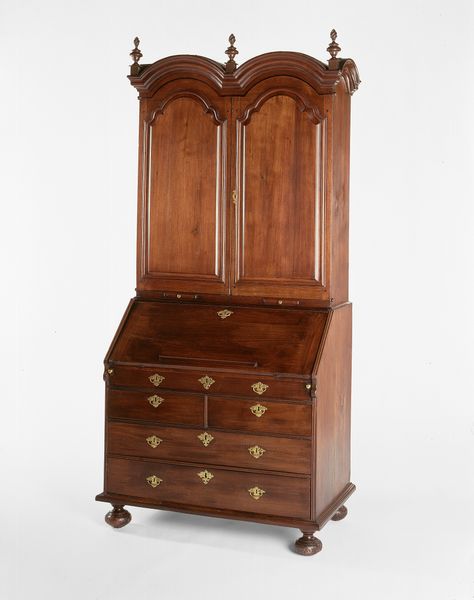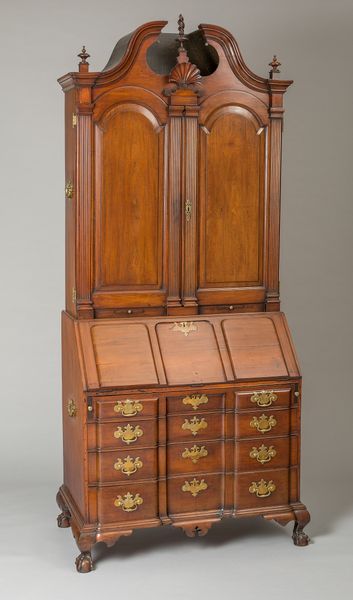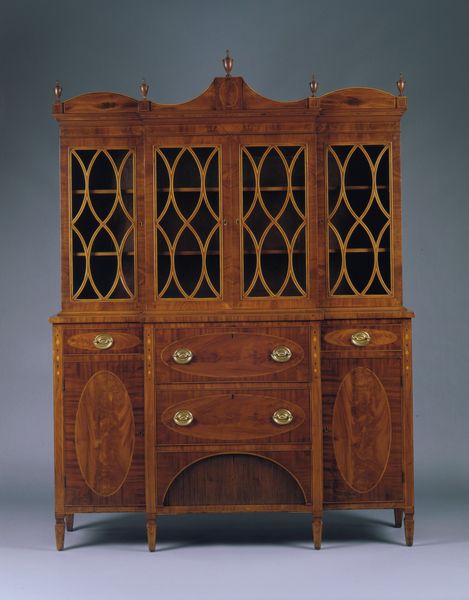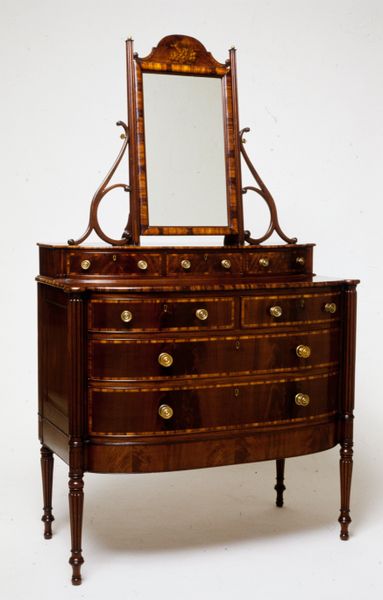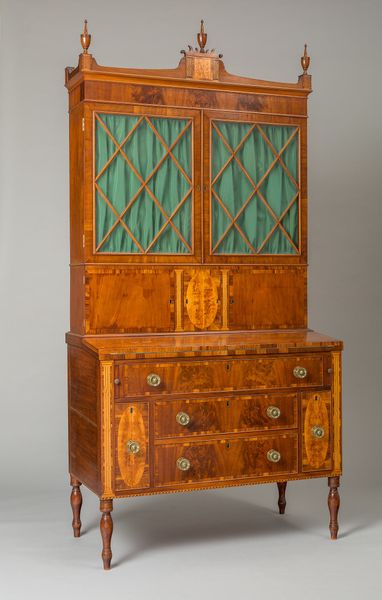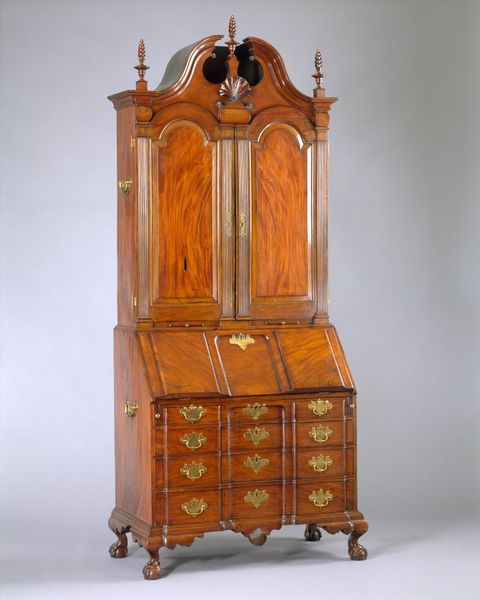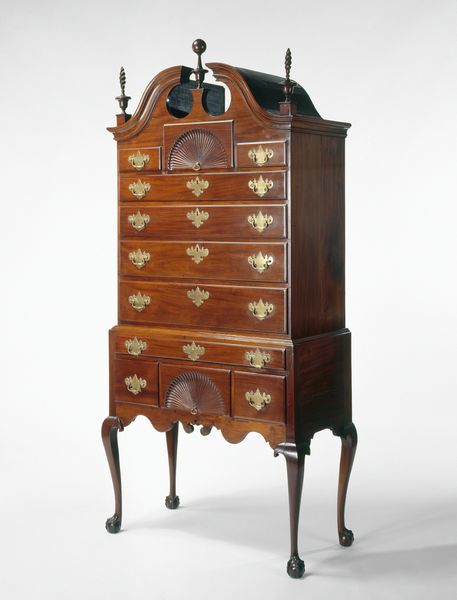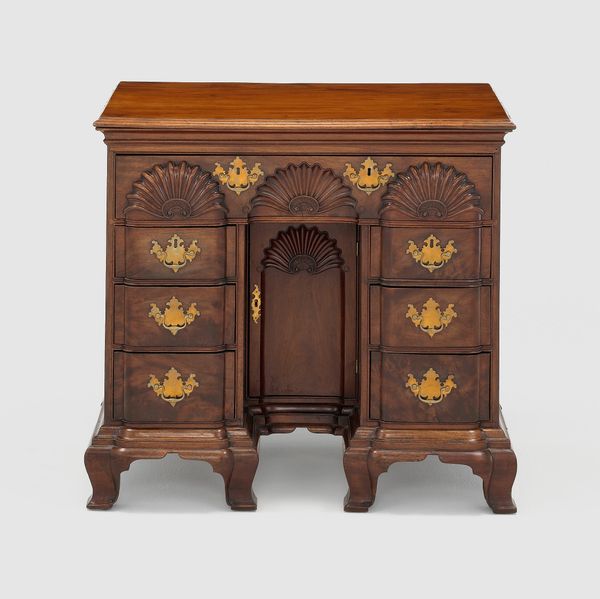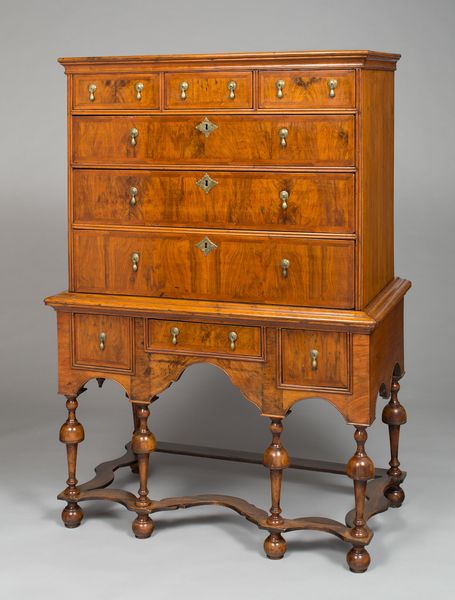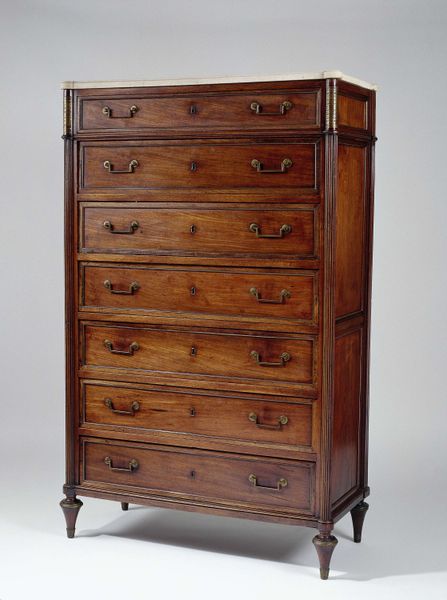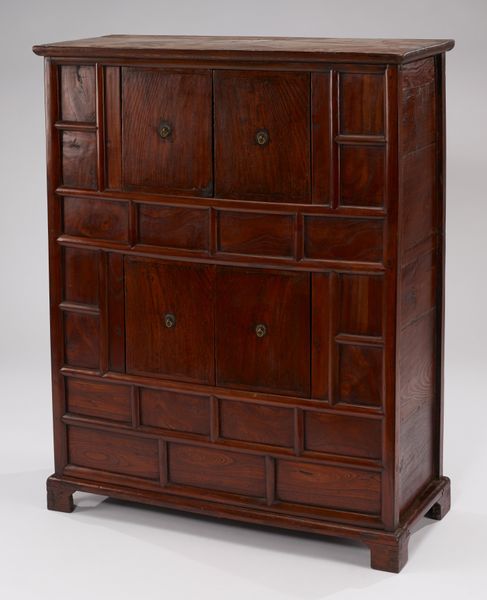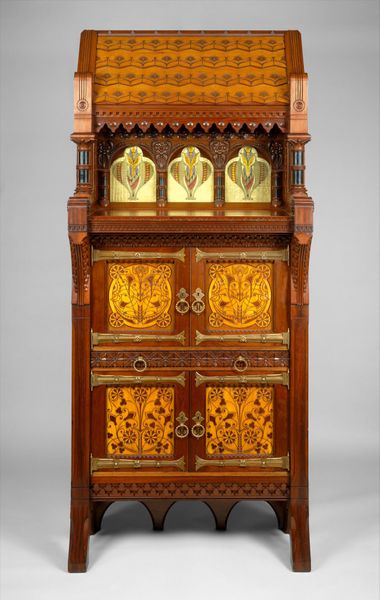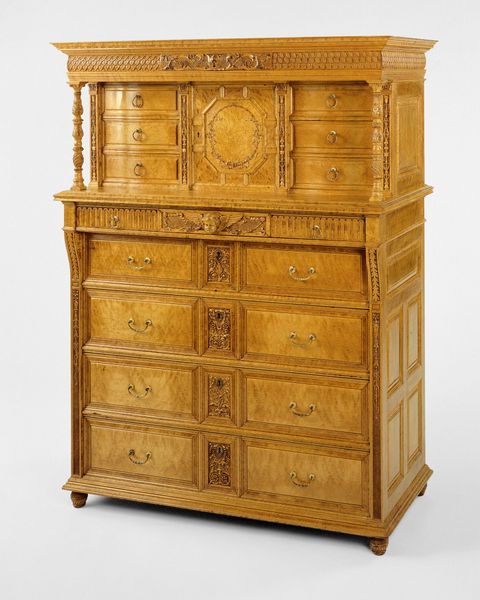
wood
#
baroque
#
furniture
#
wood
#
decorative-art
Dimensions: Height (overall): 217.2 cm (85 1/2 in.); Upper stage: 113 × 91.4 × 33 cm (44 1/2 × 36 × 13 in.); Lower stage: 104.1 × 125.7 × 55.9 cm (41 × 49 1/2 × 22 in.)
Copyright: Public Domain
Editor: Here we have a Secretary Cabinet from 1732. It’s currently at the Art Institute of Chicago. Created from wood by John Kirkhoffer, its impressive height and polished veneer radiate a sense of formality. What can you tell me about its cultural relevance? Curator: Well, its Baroque style is telling. The decorative arts of the period, including furniture, became increasingly elaborate under the influence of powerful European courts. Pieces like this functioned as declarations of status. Consider how this piece might have been displayed in a home, in contrast to being tucked away in an office? Editor: I suppose that having something so large and decorative would act as a kind of power statement. The location suggests that work and social spheres were blurring together, correct? Curator: Precisely! It suggests the owner possessed not only wealth but also refined taste. But who was dictating that taste? Think about the role of institutions – royal academies, emerging museums – in establishing and reinforcing these aesthetic standards. And consider who had access to them. Editor: So, owning this wasn't just about having money, but also being "in the know"? This object becomes almost like a symbol within a network of power. Were there earlier examples? Curator: Absolutely. These objects evolved as expressions of identity linked to political authority. Before the consolidation of art in museums, private collections like this were highly prized, serving purposes beyond just aesthetic appreciation. How do you view museums' shift into being a more public sphere impacting how these art pieces are now interpreted? Editor: It’s fascinating to see the shift from private symbols of status to publicly accessible objects that, like you say, carry political weight but in new ways. That’s something I definitely want to continue thinking about. Curator: Indeed! These types of analyses also help us interpret our relationship with museums as both cultural authorities and platforms for potentially destabilizing traditional perspectives.
Comments
No comments
Be the first to comment and join the conversation on the ultimate creative platform.
